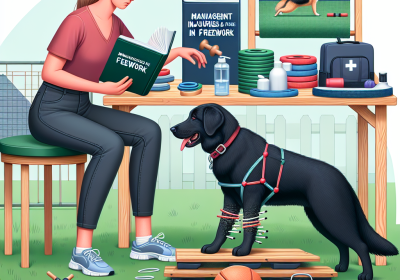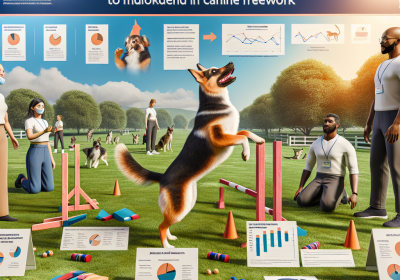Combining Canine Freework with Other Forms of Exercise
Table of Contents
Combining Canine Freework with other forms of exercise offers a holistic approach to enhancing a dog’s physical and mental well-being. Canine Freework, which emphasizes natural, unstructured activities that allow dogs to explore their environment and engage their senses, can be seamlessly integrated with structured exercises such as agility training, obedience drills, and fetch. This combination not only provides a balanced workout that addresses different aspects of a dog’s health but also keeps them mentally stimulated and engaged. By incorporating a variety of activities, owners can ensure their dogs remain fit, happy, and well-rounded, ultimately leading to a more fulfilling and enriched life for their canine companions.
Benefits Of Canine Freework For Your Dog’s Physical Health
Canine Freework, an innovative approach to dog exercise, offers a multitude of benefits for your dog’s physical health. This method, which involves allowing dogs to explore and interact with their environment freely, encourages natural movement and mental stimulation. By engaging in Canine Freework, dogs can experience a more holistic form of exercise that goes beyond the traditional walk or run. This practice not only enhances their physical well-being but also contributes to their overall happiness and mental health.
One of the primary benefits of Canine Freework is the promotion of natural movement patterns. Unlike structured exercises, which often involve repetitive motions, Freework allows dogs to move in varied and spontaneous ways. This variety in movement helps to strengthen different muscle groups, improve joint flexibility, and enhance overall coordination. For instance, when a dog navigates through different terrains, such as grass, gravel, or sand, it engages different muscles and joints, leading to a more balanced and comprehensive workout. Consequently, this can help prevent injuries and improve the dog’s physical resilience.
Moreover, Canine Freework can significantly contribute to weight management. Obesity is a common issue among domestic dogs, often leading to various health problems such as diabetes, heart disease, and joint issues. By incorporating Freework into their routine, dogs are more likely to engage in sustained physical activity, which can help burn calories and maintain a healthy weight. The unpredictable nature of Freework keeps dogs engaged and motivated, making it easier for them to stay active for longer periods compared to more monotonous forms of exercise.
In addition to promoting physical fitness, Canine Freework also supports cardiovascular health. Regular physical activity is essential for maintaining a healthy heart and circulatory system. Through Freework, dogs can engage in moderate to vigorous exercise, which helps to strengthen the heart muscle, improve blood circulation, and reduce the risk of cardiovascular diseases. The varied intensity of activities involved in Freework ensures that dogs get a well-rounded cardiovascular workout, contributing to their overall longevity and vitality.
Furthermore, Canine Freework can aid in the development of proprioception, which is the awareness of the body’s position and movement in space. This is particularly important for dogs as it helps them navigate their environment more effectively and avoid potential hazards. By engaging in activities that challenge their balance and coordination, such as climbing over obstacles or walking on uneven surfaces, dogs can improve their proprioceptive abilities. This not only enhances their physical agility but also boosts their confidence in exploring new environments.
Another significant benefit of Canine Freework is its positive impact on joint health. Many dogs, especially as they age, suffer from joint-related issues such as arthritis. Freework encourages low-impact activities that can help maintain joint mobility and reduce stiffness. For example, gentle exploration and movement through different environments can provide a form of natural, low-impact exercise that keeps joints lubricated and muscles strong. This can be particularly beneficial for older dogs or those recovering from injuries, as it allows them to stay active without putting undue stress on their joints.
In conclusion, Canine Freework offers a comprehensive approach to enhancing your dog’s physical health. By promoting natural movement patterns, aiding in weight management, supporting cardiovascular health, improving proprioception, and maintaining joint health, this form of exercise provides a multitude of benefits. Integrating Canine Freework into your dog’s routine can lead to a healthier, happier, and more active life, ultimately contributing to their overall well-being.
Enhancing Agility Training with Canine Freework

Combining Canine Freework with other forms of exercise can significantly enhance agility training, providing a holistic approach to a dog’s physical and mental development. Canine Freework, a relatively new concept in the realm of dog training, emphasizes allowing dogs to explore their environment freely, using their natural instincts and senses. This method not only enriches their sensory experiences but also fosters confidence and problem-solving skills. When integrated with traditional agility training, the benefits are manifold, leading to a more well-rounded and adaptable canine athlete.
To begin with, agility training is a structured form of exercise that focuses on improving a dog’s speed, coordination, and obedience through a series of obstacles such as jumps, tunnels, and weave poles. While it is highly effective in building physical fitness and discipline, it can sometimes become monotonous and stressful for the dog if not balanced with other activities. This is where Canine Freework comes into play. By incorporating Freework sessions into the training regimen, dogs are given the opportunity to decompress and engage in self-directed exploration, which can alleviate the pressure of constant performance and enhance their overall well-being.
Moreover, Canine Freework can serve as a valuable tool for identifying and addressing any underlying issues that may affect a dog’s agility performance. For instance, during Freework sessions, trainers can observe how dogs interact with different textures, surfaces, and objects. This can reveal any sensory sensitivities or physical discomforts that might hinder their agility training. By addressing these issues through targeted Freework activities, trainers can help dogs become more comfortable and confident, ultimately improving their agility performance.
In addition to addressing sensory and physical challenges, Canine Freework also promotes mental stimulation and cognitive development. Agility training requires dogs to follow specific commands and navigate obstacles with precision, which can be mentally demanding. Freework, on the other hand, allows dogs to make their own choices and solve problems independently. This balance between structured training and free exploration can enhance a dog’s cognitive flexibility, making them more adept at handling the dynamic and unpredictable nature of agility courses.
Furthermore, the integration of Canine Freework into agility training can strengthen the bond between dogs and their handlers. Freework encourages positive reinforcement and mutual trust, as handlers guide their dogs through various exploratory activities without imposing strict commands. This collaborative approach can translate into better communication and cooperation during agility training, as dogs learn to rely on their handlers for guidance while still exercising their autonomy.
It is also worth noting that Canine Freework can be tailored to complement specific aspects of agility training. For example, if a dog struggles with certain obstacles, Freework activities can be designed to gradually introduce similar challenges in a less structured environment. This gradual exposure can help desensitize the dog and build their confidence, making it easier for them to tackle the actual agility course.
In conclusion, combining Canine Freework with traditional agility training offers a comprehensive approach to canine exercise that addresses both physical and mental needs. By allowing dogs to engage in self-directed exploration alongside structured training, handlers can create a more balanced and enriching experience that enhances agility performance. The integration of these two methods not only improves physical fitness and cognitive development but also fosters a stronger bond between dogs and their handlers, ultimately leading to a more successful and enjoyable training journey.
Integrating Canine Freework into Daily Walks
Integrating Canine Freework into daily walks can significantly enhance the physical and mental well-being of dogs. This innovative approach to canine exercise emphasizes the importance of allowing dogs to engage in natural behaviors, thereby promoting a more holistic form of physical activity. By incorporating elements of Canine Freework into routine walks, dog owners can provide their pets with a richer, more stimulating experience that goes beyond the traditional leash-led stroll.
To begin with, Canine Freework involves creating an environment where dogs can explore and interact with their surroundings in a more autonomous manner. This method encourages dogs to use their senses, particularly their sense of smell, to investigate various objects and terrains. By doing so, dogs are not only physically active but also mentally engaged, which is crucial for their overall health. For instance, allowing a dog to sniff around a park or a wooded area can stimulate their brain and provide a sense of fulfillment that a straightforward walk might not offer.
Moreover, integrating Canine Freework into daily walks can help address behavioral issues that often arise from boredom or lack of stimulation. Dogs that are regularly engaged in Freework activities tend to exhibit fewer signs of anxiety and destructive behavior. This is because the mental stimulation they receive from exploring their environment can help to tire them out in a more comprehensive manner. Consequently, a well-exercised dog is more likely to be calm and content at home, reducing the likelihood of problematic behaviors.
In addition to mental stimulation, Canine Freework also promotes physical health. Traditional walks, while beneficial, often do not provide the varied types of movement that dogs need to maintain optimal physical condition. Freework encourages dogs to climb, dig, and navigate different surfaces, which can help to build muscle strength and improve coordination. For example, allowing a dog to climb over logs or navigate through tall grass can provide a more diverse workout than walking on a flat, paved path.
Furthermore, Canine Freework can be easily adapted to suit dogs of all ages and fitness levels. For younger, more energetic dogs, incorporating activities such as fetching or agility exercises can provide an outlet for their boundless energy. On the other hand, older dogs or those with mobility issues can benefit from slower-paced exploration and gentle sniffing activities. This flexibility makes Canine Freework an inclusive form of exercise that can be tailored to meet the specific needs of each individual dog.
To effectively integrate Canine Freework into daily walks, dog owners should consider varying their walking routes and incorporating different types of environments. Urban settings, parks, and natural trails each offer unique opportunities for dogs to engage in Freework activities. Additionally, using tools such as long leads or harnesses can give dogs the freedom to explore while still ensuring their safety. It is also important for owners to be patient and allow their dogs to take the lead during these exploratory sessions, as this autonomy is a key component of Canine Freework.
In conclusion, integrating Canine Freework into daily walks can provide numerous benefits for dogs, including enhanced mental stimulation, improved physical health, and reduced behavioral issues. By allowing dogs to engage in natural behaviors and explore their environment, owners can offer a more enriching and fulfilling exercise experience. This holistic approach not only contributes to the overall well-being of dogs but also strengthens the bond between pets and their owners, making daily walks a more enjoyable and beneficial activity for both parties.
Combining Canine Freework with Obedience Drills
Combining canine freework with obedience drills can significantly enhance a dog’s physical and mental well-being. Canine freework, which involves allowing dogs to explore their environment freely, encourages natural behaviors and provides mental stimulation. On the other hand, obedience drills focus on teaching dogs specific commands and behaviors, promoting discipline and control. Integrating these two forms of exercise can create a balanced and comprehensive training regimen that benefits both the dog and the owner.
To begin with, canine freework offers numerous advantages that complement the structured nature of obedience drills. By allowing dogs to engage in freework, owners can observe their pets’ natural inclinations and preferences. This insight can be invaluable when tailoring obedience drills to suit individual dogs. For instance, a dog that shows a keen interest in sniffing and exploring during freework sessions may respond well to scent-based obedience exercises. Consequently, the integration of freework and obedience drills can lead to more effective and enjoyable training sessions.
Moreover, the combination of freework and obedience drills can help prevent boredom and burnout in dogs. While obedience drills are essential for instilling discipline, they can sometimes become monotonous if not varied. Incorporating freework into the training routine introduces an element of novelty and excitement, keeping the dog engaged and motivated. For example, after a session of structured obedience drills, allowing the dog some time for freework can serve as a rewarding break. This balance between structure and freedom can enhance the dog’s overall training experience.
In addition, combining freework with obedience drills can improve a dog’s problem-solving skills and adaptability. Freework encourages dogs to think independently and make decisions based on their environment. When these skills are integrated with obedience drills, dogs learn to apply their problem-solving abilities within a structured framework. For instance, a dog that has developed keen observational skills during freework may be better equipped to understand and execute complex obedience commands. This synergy between freework and obedience drills can lead to a more well-rounded and capable dog.
Furthermore, the integration of freework and obedience drills can strengthen the bond between the dog and the owner. Freework sessions provide an opportunity for owners to observe and understand their dogs’ behaviors and preferences. This understanding can inform the design of obedience drills, making them more personalized and effective. Additionally, the shared experience of exploring and learning together can foster a deeper connection between the dog and the owner. This enhanced bond can, in turn, improve the dog’s responsiveness and cooperation during training sessions.
It is also worth noting that the combination of freework and obedience drills can cater to the diverse needs of different dog breeds and temperaments. Some dogs may thrive on the structure and predictability of obedience drills, while others may benefit more from the freedom and exploration offered by freework. By integrating both forms of exercise, owners can create a balanced training regimen that addresses the unique needs of their dogs. This holistic approach can lead to better overall outcomes in terms of behavior, health, and well-being.
In conclusion, combining canine freework with obedience drills offers a multitude of benefits that can enhance a dog’s training experience. By integrating the natural exploration and mental stimulation of freework with the discipline and control of obedience drills, owners can create a balanced and effective training regimen. This approach not only prevents boredom and burnout but also improves problem-solving skills, strengthens the bond between dog and owner, and caters to the diverse needs of different dogs. Ultimately, the synergy between freework and obedience drills can lead to a more well-rounded, capable, and happy dog.
Read more about Canine Freework
Canine Freework and Physical Exercise
– The Physical Demands of Canine Freework
– Canine Freework as a Form of Exercise for Dogs
– How to Safely Increase Physical Demands in Canine Freework
– Combining Canine Freework with Other Forms of Exercise
– Managing Injuries and Fatigue in Canine Freework



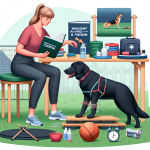
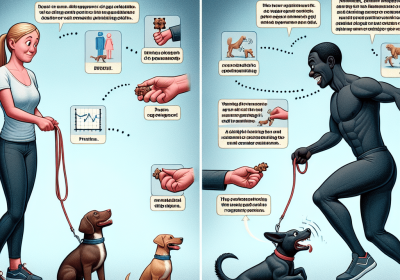
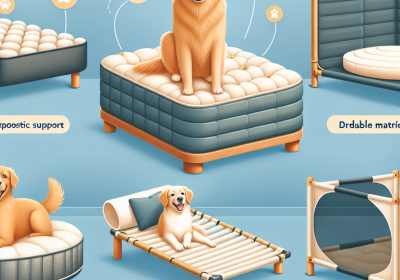
![The Dog Podcast Uncovers Startling Truths About What We Feed Our Dogs [Press Release]](https://narrativenest.com.au/wp-content/uploads/2024/08/canine-nutritious-food-400x280.jpg)
